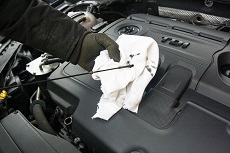
The high cost of equipment downtime has forced facility managers to rethink their maintenance models. As reactive approaches aren’t reliable anymore, organizations increasingly explore data-centric methods that enable timely failure detection and prevention.
They’re now adopting preventive maintenance as one of the best ways to make facilities management more productive.
What Is Preventive Maintenance?
As opposed to “firefighting,” preventive maintenance entails regular/scheduled equipment inspection, fault detection, and significant failure prevention. It’s an integral part of facilities management. Helping detect and fix minor issues preemptively prevents severe downtime that could impact a facility’s productivity.
The approach helps prolong asset life, enabling organizations to avoid unnecessary costs for replacing equipment or system components. To attain these preventive maintenance benefits, an understanding of the basic steps of the process is necessary. It’ll help you create a solid plan and streamline all workflows.
By improving your maintenance methods, you can keep everyone on the same page regarding expectations, from operations to technical support. This step helps with critical aspects of your preventive maintenance program, including task prioritization and scheduling compliance.
- Organize Your Assets
It’s essential to keep tabs on your assets as these are your preventive maintenance plan’s focus. These include any physical tools, including machinery or equipment that support or are part of your production processes. Organize and track it if it’s tangible and can break down, no matter your industry.
Vehicles are primary fixed assets for a logistics company, while a lawn/tree care contractor maintains items like mowers and power saws. A typical school maintenance program tracks various items, from boilers and HVAC units to sprinklers and public address systems.
To keep everything organized and accurately prioritize maintenance, you’ll need to identify your assets. Determine the location for all equipment that requires routine inspection. If multiple components make up an asset, name those parts.
Keeping asset data like cost and date of acquisition can help with preemptive maintenance scheduling and budgeting for replacement.
- Determine When Maintenance Will Be Needed
Preventive maintenance shouldn’t be random, and specific requirements for each asset generally vary by type, usage, or other metrics. Getting your schedules correct ensures that each asset gets the attention and service required for optimal performance.
You can determine when a piece of equipment requires evaluation or repair to avert failure based on:
- The calendar– With this time-based approach, you set the asset maintenance date after a specific duration, such as days, weeks, months, or years. The historical maintenance data or manufacturer guidelines for a particular asset can determine how often it should be serviced or inspected for issues. For example, most HVAC system filters require replacing every three months.
- Use metrics– This concept is based on the fact that certain equipment components generally wear out after a specific number of operating hours, miles covered, or other meter readings.
- Assign Maintenance
Each maintenance task requires a specific skill-set, and this is the most crucial basis for assigning tasks. It improves the chances of getting the job done without the need for rework. It would be best to track various team members’ skills and determine who’s qualified and available to do the maintenance work.
To keep a highly efficient team, ensure to monitor performance and training requirements for each member. Metrics such as schedule compliance, cost of quality, or labor hours/costs can help assess the effectiveness of your maintenance operations.
As you can identify skill gaps and determine top performers, it’s easier to make suitable future hires and team allocations.
- Business as Usual, but Better
You must develop a versatile preventive maintenance program with room for process and productivity improvement. To get better at maximizing operational uptime through proactive practices, try incorporating routine asset inspections. These can help reveal issues sooner than expected, helping you adjust your time or usage-based maintenance schedule to maximize efficiency.
Better yet, you can streamline your entire workflow with preventive maintenance software. Automated task creation or scheduling based on usage or time-based metrics facilitates prompt preventive measures. As the system provides centralized data, all relevant parties can collaborate on tasks and make informed decisions in real-time.
A data-centric approach providing in-depth asset, process, and resource utilization insights helps improve your overall preventive maintenance efficiency.
Maximizing Uptime
Breakdown/corrective maintenance is slowly becoming obsolete as organizations leverage better ways to optimize equipment health and increase uptime. To achieve optimal operational efficiency and productivity, you can now incorporate preventive maintenance into your facility management program. Implementing fault detection, task scheduling, and failure prevention become much smoother with the insights-driven maintenance solutions available today.






